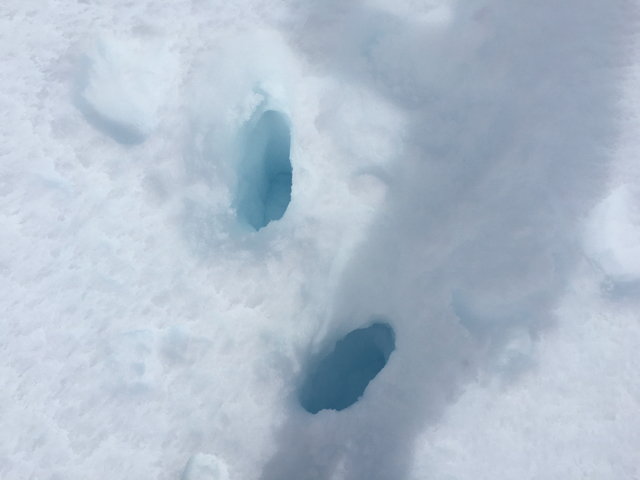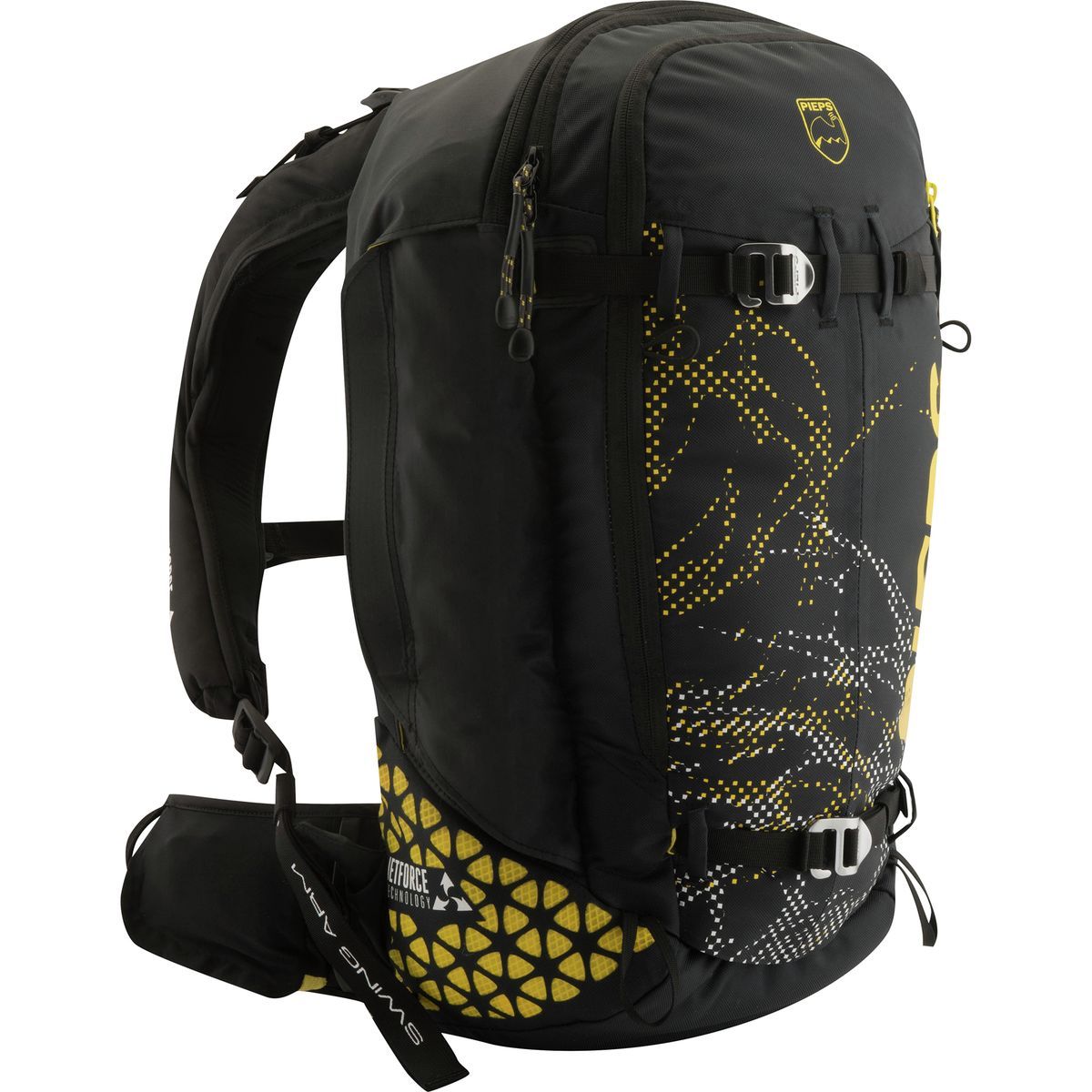SPRINGTIME AVALANCHE TIPS – Timing is everything! The spring transition can have an unexpected effect on snowpack characteristics. Stable snow can become weak and harzardous in a matter of hours. What to look for? Ask yourself these questions: Am I dealing with winter snow (cold and dry) or spring/summer snow (wet, warm and/or refrozen)? Or is it some combination? What weather factors have affected the snowpack today and recently?
Remember the Red Flags that indicate instability!
- Are there recent avalanches? What kind?
- Cracking in the snow? Collapsing?
- New snow? Rain?
- Wind loading?
- Rapid Warming? Did it freeze last night? How many nights with no freeze? How deep are you sinking in?
While many people may have written off winter and have transitioned to springtime activities, there is still plenty of snow in the mountains. On any given day conditions can range from warm and sunny t-shirt weather, to pouring rain, to cold and snowy mid-winter conditions. Being able to recognize and respond to specific avalanche concerns is key in making effective decisions in avalanche terrain.
Hiking on summer trails during the springtime warm-up (including the Byron Glacier trail, Crow Pass, etc). Extra caution is advised for trails that cross under avalanche paths. Avoid being under large snow covered slopes this spring as avalanche hazard does remain. Most common times for natural springtime avalanches are during sunny afternoons/evenings or periods of warm rainy weather. Know that an avalanche occurring above you could send debris to snow-free zones and valley floors.
Byron Glacier trail. Areas under snow-free slopes are safe from avalanches, as pictured below (yet rockfall hazard may exists). Areas under slopes with snow remaining – avalanche hazard exists – see the April 29th update on Byron HERE.
 –
–
Loose Snow Avalanches: Both dry and wet loose avalanches are common springtime avalanche concerns. Pay close attention in steep terrain, especially when the sun first hits freshly fallen snow. Remember loose avalanches can be particularly hazardous if they push you into a terrain trap. Wet loose avalanches can trigger wet slabs on the slopes below.
Skier triggered loose snow avalanches on Sunburst observed on Friday April 28th.

Wet Slab Avalanches: Wet slab avalanches are currently happening and they are often a possibility this time of year. A combination of a slab, weak layer and water percolating into the weak layer is what is needed for this type of avalanche to occur. As temperatures rise and/or rain falls these could happen even on the higher elevation Northerly slopes. It is also important to pay attention to if we get another storm that deposits a new slab and then rain or sun sends water down into the snowpack. Weak layers and water in the snowpack are generally an unstable combination.
Wet slab on Seattle Ridge. This occurred on 4.14.17.

Storm Snow: It is still possible to get significant snowfall this time of year. If it is raining hard at lower elevations depending on temperature it may being snowing hard up high. Pay attention to how much new snow has fallen and what surface it is sitting on. Is there a foot of new snow sitting on surface hoar or a hard crust or over wet snow ? Even without a persistent weak layer between the slab and the bed surface, it is still possible to trigger dangerous slab avalanches. These storms slab may also be tender and reactive right as they start to warm in the spring sun or with a rapid temperature rise.
7-day point forecast on April 28th for the coming week. This is for around 3,000′ on Turnagain Pass.

Wind slab: It is also important to continue to pay attention to wind direction and loading patterns. New snow can quickly be loaded on leeward slopes and form touchy wind slabs. Look for areas of pillowed snow and watch for cracking. Like storm snow, wind slabs can be tender with the first warmup after the loading event. Again you may be seeing a rain storm and forget that it is actually snowing and blowing up high. Check the weather page! What direction has the wind been blowing from? How strong for how long?
Sunburst’s Windrose

Cornices: Some slopes still have large cornices looming above them. Knowing exactly what will tip the scales is difficult. To date we have yet to see a wide spread natural cornice fall cycle. Some factors that contribute to cornice fall are sun, heat, and new snow with wind. Give cornices a wide berth and take measures to minimize your exposure beneath them. Remember they have a tendency to break much further back than expected.
Magnum ridgeline 4.17.17

Glide Avalanches: Compared to last season glide activity overall has been minimal. However, glide releases have ramped up over the past couple weeks. Glide cracks are continuing to appear and release. Remember they are unpredictable and that they are the entire snowpack sliding to the ground. Avoid travel under glide cracks.
Seattle Ridge on Monday April 24th with recent glide avalanches.

Below are some ways to both anticipate and deal with the above mentioned avalanche concerns:
• Watch for the “shed cycle or complete melt-down” on the higher elevation slopes and aspects still holding snow. What this means is avalanches that are running to the ground due to a warm, wet snowpack; wet slabs, wet loose avalanches and glide avalanches. One great way to anticipate this is to keep an eye on the ridgetop weather stations (click HERE). Avalanche activity often follows 3 or 4 consecutive nights of no re-freeze at the higher elevations. Rain can accelerate this avalanche cycle. Careful route planning to stay out from under slopes with wet and rotten snow is essential during this period.
• Damp or wet snow more than 6″ deep is a sign that it’s time to exit the area. Following the aspects as the sun heats up the slopes over the course of the day, East to South then West, can make for great riding/skiing days ending in sunny tailgating. High elevation North slopes may still have winter like conditions but may also be wet if the temperatures rise enough and/or if rains in the Alpine.
• Keep in mind, cloud cover ‘holds in the heat’ and can dramatically limit overnight refreezing. A shallow to no refreeze will not only give daytime heating a jump start on weakening the pack, but can produce less than stellar riding conditions.
• Beware of warm storms where rain is falling on snow, especially when rain is falling on cold dry snow. This can quickly increase the avalanche danger. €¨
• Stay off of CORNICES. When approaching from the side or above, make sure you can see where the cornice ends and the underlying terrain begins. If you can’t see that transition area, move away from the edge. If you find you and your group below cornices, expose only one person at a time and move efficiently through those areas.
• Lastly, don’t forget to plan your route back to the car. Does it take you under slopes that were frozen and safe earlier in the day, but now have been cooking in the sun waiting to slide on your return? Under cornices? Under glide cracks?
Are you sinking in??? Wendy’s full leg boot pen on April 22.

Until next season, be safe in the mountains and have a great summer! –Wendy, Heather, Aleph and Graham
 –
–


 –
–






 –
–
